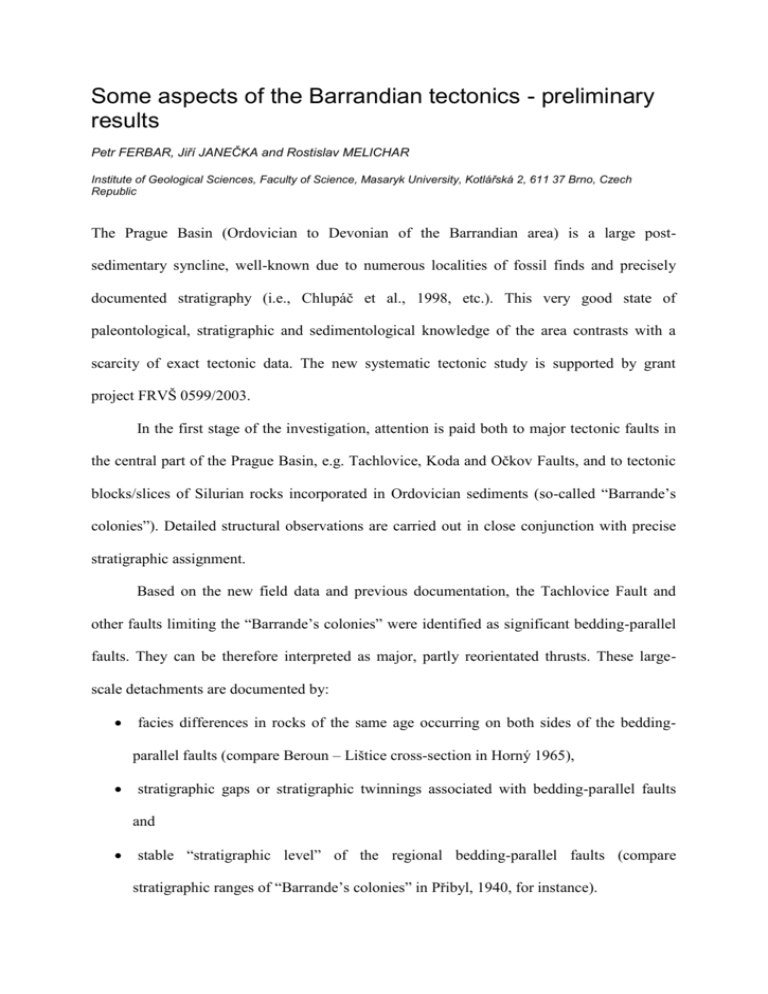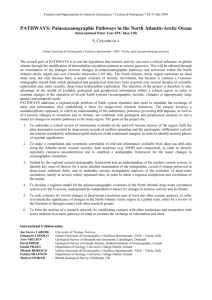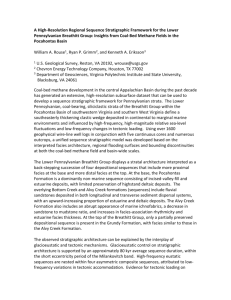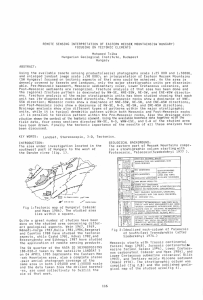Some aspects of Barrandian tectonics, a preliminary results
advertisement

Some aspects of the Barrandian tectonics - preliminary results Petr FERBAR, Jiří JANEČKA and Rostislav MELICHAR Institute of Geological Sciences, Faculty of Science, Masaryk University, Kotlářská 2, 611 37 Brno, Czech Republic The Prague Basin (Ordovician to Devonian of the Barrandian area) is a large postsedimentary syncline, well-known due to numerous localities of fossil finds and precisely documented stratigraphy (i.e., Chlupáč et al., 1998, etc.). This very good state of paleontological, stratigraphic and sedimentological knowledge of the area contrasts with a scarcity of exact tectonic data. The new systematic tectonic study is supported by grant project FRVŠ 0599/2003. In the first stage of the investigation, attention is paid both to major tectonic faults in the central part of the Prague Basin, e.g. Tachlovice, Koda and Očkov Faults, and to tectonic blocks/slices of Silurian rocks incorporated in Ordovician sediments (so-called “Barrande’s colonies”). Detailed structural observations are carried out in close conjunction with precise stratigraphic assignment. Based on the new field data and previous documentation, the Tachlovice Fault and other faults limiting the “Barrande’s colonies” were identified as significant bedding-parallel faults. They can be therefore interpreted as major, partly reorientated thrusts. These largescale detachments are documented by: facies differences in rocks of the same age occurring on both sides of the beddingparallel faults (compare Beroun – Lištice cross-section in Horný 1965), stratigraphic gaps or stratigraphic twinnings associated with bedding-parallel faults and stable “stratigraphic level” of the regional bedding-parallel faults (compare stratigraphic ranges of “Barrande’s colonies” in Přibyl, 1940, for instance). The detachments preferably follow a specific stratigraphic horizon on regional scale (e.g., the Bohdalec, Želkovice and Motol Fms) as well as in detail (e.g., convolutus, crispus, spiralis zones). In the close surroundings of these large-scale detachments, small-scale detachments are abundant. These are well visible in the outcrops, being marked by: small-scale duplexes, small-scale ramps (upper or lower; see Fig. 1), detached asymmetric folds (see Fig. 2). In general, all these small asymmetric structures indicate south-vergent tectonic movement, even though they could have been subsequently reactivated in different ways within younger tectonic phases. Our new data are in good agreement with the tectonic concept presented by Melichar and Hladil (1999). References: HORNÝ R., 1965. Tektonická stavba a vývoj siluru mezi Berounem a Tachlovicemi. Časopis pro mineralogii a geologii, 10, 2: 147-155. Praha. CHLUPÁČ I., HAVLÍČEK V., KŘÍŽ J., KUKAL Z. and ŠTORCH P., 1998. Paleozoic of the Barrandian (Cambrian to Devonian). Czech Geological Survey. Prague. PŘIBYL A., 1940. Stratigrafické rozčlenění graptolitových zón z tak zv. „Barrandeových kolonií“. Věstník Královské české společnosti nauk, Třída mathematicko-přírodovědná, 1940, 10: 1-12. Praha. MELICHAR R. and HLADIL J., 1999. Resurrection of the Barrandian nappe structures (Central Bohemia). Geolines, 8: 48-50. Praha. Fig. 1. A small ramp indicating south-vergent tectonic movement in the Silurian rocks, footwall of the Tachlovice Fault, Lištice village near Beroun. Fig. 2. Detached asymmetric south-vergent fold in Silurian rocks, footwall of the Tachlovice Fault, Lištice village near Beroun.









